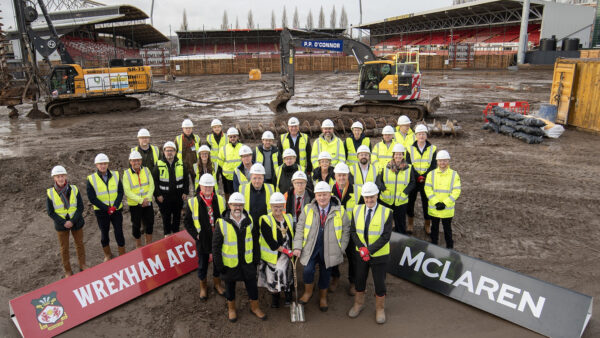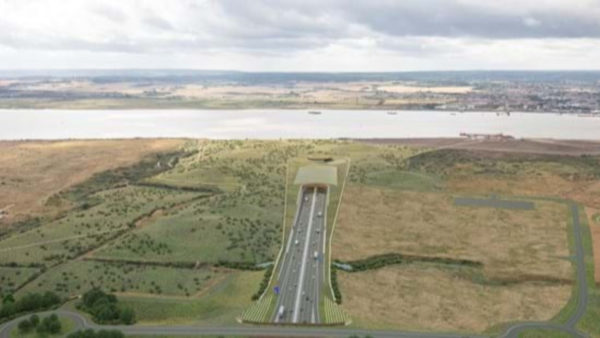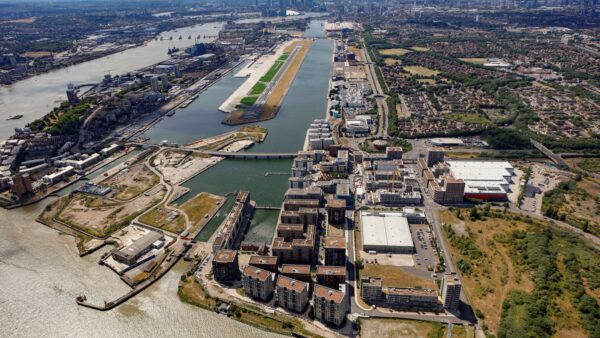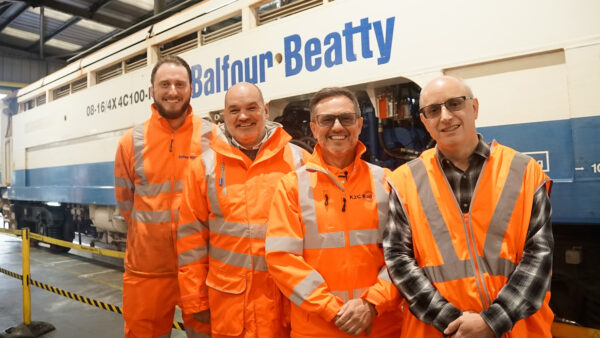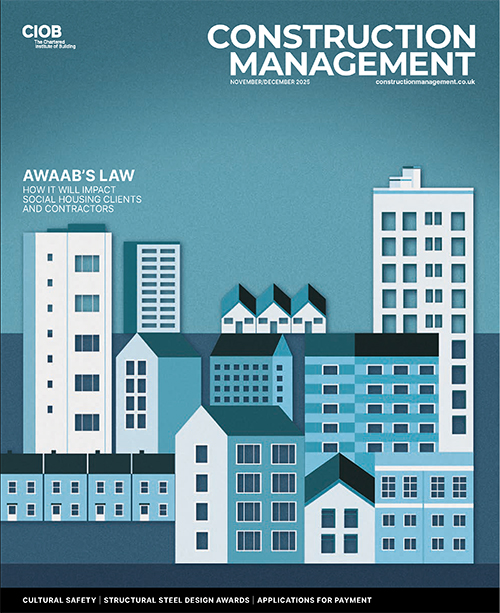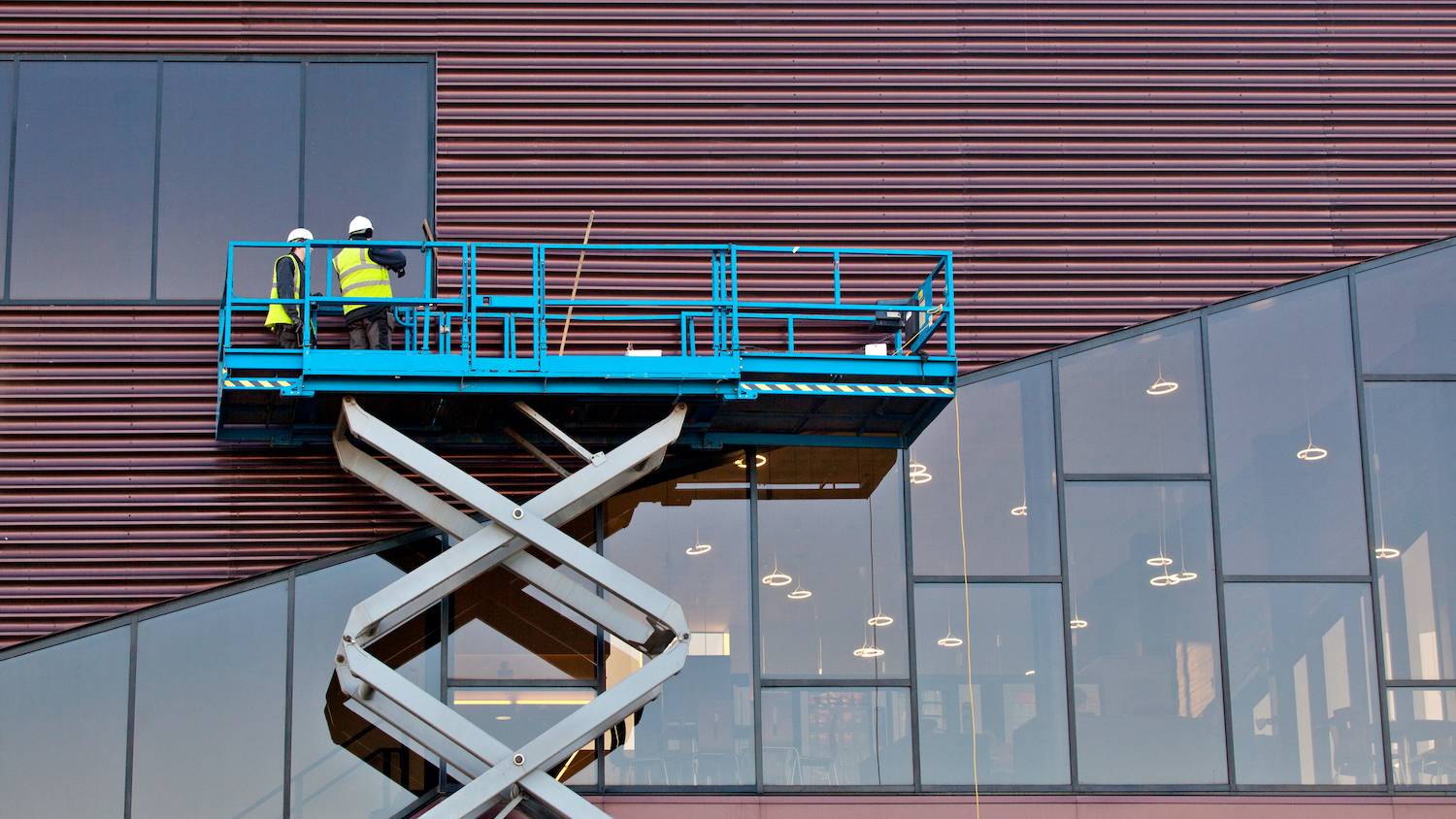What was it like working in construction 60 years ago? As the Queen’s Diamond Jubilee approaches, Denise Chevin talks to two members and the head of a family dynasty who were there at the time.
The 1950s will never be viewed as the glory years of architecture and construction. When Elizabeth ascended to the throne on 6 February 1952 after the death of George VI, the country was still recovering from the ravages of war. And until 1954, when all restrictions were lifted, building materials were rationed like everything else. Buildings of the day were noted for their pared back specifications and distinct lack of generosity of materials.

With more than a million homes destroyed in the war, combined with the slum clearance programme of the inner cities, public house building took centre stage. By 1951 Harold Macmillan had become housing minister in a new Conservative government and pledged to deliver 300,000 new homes a year.
This was the era of new council estates, while whole New Towns such as Welwyn Garden City, Harlow and Crawley started to take shape, built in response to Patrick Abercrombie’s London dispersal plan of 1944. All of these towns featured low-rise, low-density housing with plenty of public spaces and greenery as an antidote to run-down, high density inner city terraces.
The industry’s quest was very much to speed up construction. Mobile cranes were used for the first time in house building; mobile offices were beginning to appear on sites; and a host of revolutionary new materials started coming on stream, such as plywood, Formica and plastics.
Meanwhile, the Education Act of 1944 guaranteed a right to secondary education and the National Health Service of 1948 pledged access to
free medical attention. It meant that new hospitals and schools were urgently needed.
On the domestic front, if you were born in the 1950s it is very likely that your mother did not work outside the home, while in 1957 your father toiled for three hours to pay for a weekly basket of basic food, compared to just 40 minutes in 2007.
It was in the 1950s that modern conveniences such as electric fires, washing machines, cookers, vacuum cleaners and plug-in radios became commonplace. The appearance of black and white TV in people’s homes was boosted by the Coronation in 1953, which was televised for the first time.
In 1952 the population of Great Britain was 50 million, while membership of the CIOB stood at 1,700.
While public housing and schools were the staple of the industry’s 1950s, the decade wasn’t entirely without glamour projects. In 1951 the Festival of Britain took place on London’s South Bank to mark the centenary of the Great Exhibition. The entrance structure featured the largest timber arches ever manufactured in Europe, the iconic Skylon and the Dome of Discovery — the largest dome ever constructed. The revolutionary Royal Festival Hall was also built as part of the Festival along with the Lansbury Estate in Poplar, a model housing estate.
Outside of London, one of the key buildings of note was Coventry Cathedral, designed by Basil Spence and built between 1954 and 1962 by John Laing.

Women stayed at home while the men went out to work

The Coronation of Queen Elizabeth II was televised
Geoffrey Sharpe FCIOB, 80
The retired surveyor has seen many changes in building since the fifties, but says the biggest have been in regulations and education
Geoffrey Sharpe was a budding surveyor when Princess Elizabeth ascended to the throne. He was working at Chichester City Council for his HNC and doing his surveyor exams, having gone into the industry at 16 as most people did in those days. “I was working hard and living at home at the time of the Coronation. I remember the occasion well. My parents bought a TV for the first time and neighbours came in to watch. Everyone got the day off.
“It felt as if we were living it up a bit amidst all the austerity around in the aftermath of the war. Food was still on rationing and jobs were few and far between. Building was tightly controlled, so many had been demolished during the war. The government was trying to control building to make sure it was all in the right direction. You had to get a licence to buy building materials in those days. Quite a few architects were working as clerks in offices; it was really hard for them.”
Harold Macmillan became housing minister in 1951 and started the biggest house building programme the country has ever seen, building 300,000 homes a year. But the impact certainly wasn’t felt in West Sussex until a few years later.
“By the mid-1950s the controls had come off, building materials licences were removed in 1954 and the industry was doing pretty well.
“All of a sudden life got a little better.
I got my first car in 1956 — I needed it for my job. It was a pale blue Austin A30 — I bought it on an HP arrangement. It was rare to have a car at my age”.

Geoffrey Sharpe today and in the 1950s. In 1956 he bought his first car — an Austin A30
Sharpe spent many years working in Chichester and West Sussex, three at the city council, where surveying war damaged properties was initially was one of the main staples of his job, and then in private practice. He had a spell as director of a building company and also worked as a consultant across the south east. While studying for his surveying qualification, he developed a special interest in church restoration and conservation, which he is still actively involved in today. Twenty years ago he studied for an MSc in building conservation and now sits on the CIOB conservation committee. In the last few years has been commissioned by the Manx government to record the condition of all the places of worship on the Isle of Man, where he moved to 18 years ago.
He has also written several books on conservation and acts as property adviser to Age Concern.
Over the past six decades Sharpe has certainly witnessed many changes: technology has changed from using a dumpy level to survey sites through to radar equipment. Some of the biggest changes to building, though, happened in areas that are easy to take for granted these days: the replacement of lime by additives in cement, speeding up the mixing and setting of concrete; the appearance of timber roof trusses which shaved weeks off building a home; plastic pipes and central heating.
But not all changes have been for the better, says Sharpe. “One of the biggest differences was the introduction of the Building Regulations — we just had building by-laws in the fifties. We certainly needed change, but what we have now can be quite oppressive and restrictive. Certainly we need to foster good building standards, but I think this could be achieved by less regulation and more liability on the builder. And even though we have more regulation we’re still getting bad buildings.”
He is also critical of the EU procurement rules, which stipulate that anyone tendering public works worth more than £500,000 has to advertise the work throughout Europe. ”It really is a bit of a nightmare,” he says.
But he says the biggest change in the industry is on the education side. “When I started there were only one or two universities doing a course in building — nowadays there are dozens. And I think the emphasis on [workplace] NVQ qualifications has been misplaced. The OND and HNC system was better. It provided a great route for people who started in the industry without formal qualifications to rise to the top. NVQs are a bit too motherly.”
And if he could do anything differently? “If I started all over again I’d try and get a degree early on — it’s a better way of getting on and puts you in a position of earning more money more quickly.”

Despite continuing austerity, the 1950s kicked off in 1951 with the Festival of Britain (below), for which the Royal Festival Hall was built


Market Square in the New Town of Harlow, Essex, developed in the 1950s
Irene Briscoe MCIOB, 85
A working mother, Irene Briscoe recalls a visit to the Festival of Britain and her lifelong struggle against unequal pay
Women in the industry were few and far between in the 1950s. Irene Briscoe was an even rarer breed: a wife and mother working in the industry.
Briscoe knew from an early age that she wanted to work in design. So after leaving the girl’s grammar school in Isleworth, she studied design at Twickenham College of Art, with a spell at Hammersmith Technical College to learn about structure. She got her first job in 1946 as a junior draughtswoman at Hounslow council, earning 3 guineas a week. The tools of the trade in those days were a pen holder and reservoir, which were used to draw on blue linen dusted with powder.

Like so many people in construction at the time, she worked on housing — and also the first infant school built after the war. “There were certain rules and regulations you had to abide by,” she recalls. “Even the third size room [in new homes] had to be 70ft2. These days room sizes still get smaller and smaller, which is a retrograde step.”
After four years at Hounslow Briscoe moved on to Feltham Council, where again she was the only woman draughtsperson — again working on housing estates — though “woman’s work” always fell to her, like making the bunting for the local parade the council was taking part in. “It did feel an exciting time though. We got time off to go on an office outing to the Festival of Britain and see the first computer at the Teddington Laboratories and to the ICI factory to see new coloured paint.”
A theme that continued throughout her career was the gender pay gap. “I earned a lot less money than the men — I was a source of cheap labour,” she says matter of factly. When she tried to take a stance against her employer before she retired in 1986, aged 60, she got no support from her union and was advised to drop it and not make a fuss.
By 1955 Briscoe had moved to work in the New Town of Harlow and was by now married to an engineer. After a spell at Harlow she moved to Billericay but gave up work to bring up her two children.
Unusually she decided to go back to work after a five-year break, getting a job with a local architect, with her pay supplemented by extra work for an estate agent. Things came to an abrupt end there when she was shouted out for going home early because her son had measles — even though she took the work with her.
Spells at other private practices were followed by a return to local authority employment, this time with Havering council, where she stayed until she retired. For much of the time she remained the only woman in the department. Her marriage had broken down and “I wanted to make myself more independent”, she says of the move back into the public sector.
“If there was anything difficult to do which might involve a row, I was the one who was sent to sort it out,” she recalls.
Though she retired some 30 years ago, the 85-year-old still keeps her hand in, giving talks on housing and even doing the occasional bit of design. “I recently designed an attic conversion for my granddaughter,” she says.
As for all the royal festivities in the 1950s, Irene says: ”No I don’t remember the Coronation — I must have been working.”

Rationing was enforced until the mid-1950s

Harold Macmillan (above) kick-started house building, while homeowners were able to enjoy domestic advances such as Formica (below)

Alan Beard, 79
As a 17-year-old starting in the family firm, Alan Beard is still working. He remembers a world of few rules, cold offices and rationing
On 19 January 1950 Alan Beard, aged 17, followed his elder brother into the family business as a trainee estimator and surveyor. He was the third generation at Beard Construction. “I earned three pounds five shillings a week and beer was one and threepence,” he recalls. “In those days health and safety were unknown words. There were few rules, the main one being scaffold was meant to have handrails, but it would often get missed. You’d cut asbestos with a saw.
“Things are much better now and building generally is much more systematic.” Beard took over the family construction business in the 1970s before handing over to his son Mark in 1999.

These days Beard Construction is a £59m turnover firm and employs 170 people, many of whom are craftsmen.
Beard senior still works five days a week, mentoring the 20 trainees, which span crafts, contracts management, estimating and surveying. He looks after the company’s properties, liaises with CITB ConstructionSkills and still carries out some estimating. Around half of the firm’s work is in the education field.
When he started in the firm, Beard had a spell at the joinery works in Cirencester, a newly acquired part of the business. “In those days most building companies had joinery works, and it was common to have a sideline making coffins,” he explains. “So when building work was slow, joiners would move on to that line of work.
“In the 1950s there was an enormous backlog of repairs and decoration to be done. It was one of my jobs to get timber licences to buy timber.
“Construction has definitely changed for the better on many levels, and the quality of the design and construction is definitely much improved — and the buildings are definitely better places to work in, for us too. And I remember when I started there was no central heating. These days we are just about to bore 100m under the office in Guildford to get heat from the ground.
“If I had my time again I would have gone out and worked for another builder as Mark has done. I think it’s important to know what it feels like to be an employee and not just an employer.
“It’s been an extremely rewarding career. We have some very good staff here. One of the things that really pleases me is that we’re a non-hierarchical company and we try and employ as many people as possible in the decision-making process.”
Alan Beard certainly has no plans for retirement and by family standards he’s still a youngster. “My grandfather is in the Guinness book of records for being the oldest working man. He was still coming into work aged 103.”



